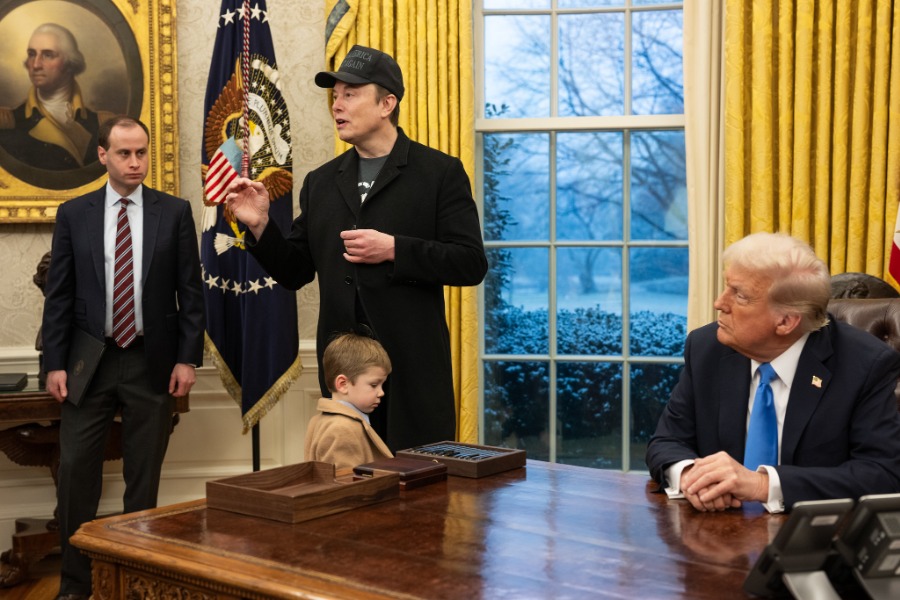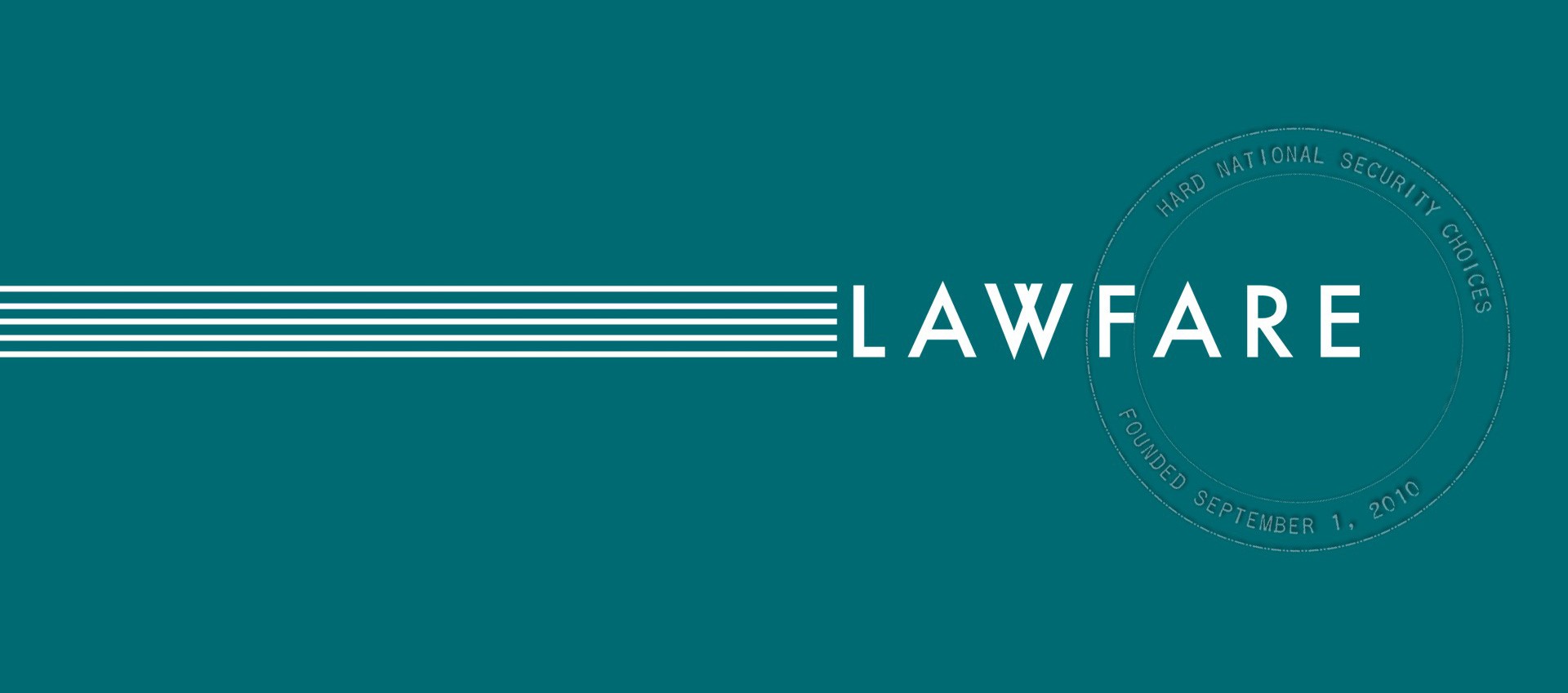Shades of 9/11: Borrowing E.B. White
Prescience
In 1948, E.B. White penned a little essay that would become a little book. “The city,” he wrote, “is like poetry: it compresses all life, all races and breeds, into a small island and adds music and the accompaniment of internal engines.” His ode to that city, Here Is New York, did the same, garnering universal praise for condensing the strange poetry of Manhattan into just 7,500 words.
Published by The Lawfare Institute
in Cooperation With

Prescience
In 1948, E.B. White penned a little essay that would become a little book. “The city,” he wrote, “is like poetry: it compresses all life, all races and breeds, into a small island and adds music and the accompaniment of internal engines.” His ode to that city, Here Is New York, did the same, garnering universal praise for condensing the strange poetry of Manhattan into just 7,500 words.
Shortly after the attacks of September 11, White’s celebrated text vaulted back into the public consciousness. This time commentators flipped to the end, for White’s lilting city stroll stops on an ominous note—a note that 9/11 snatched from the realm of nightmare, where it had smoldered for half a century, and tossed into the fires of prophecy:
The subtlest change in New York is something people don’t speak much about but that is in everyone’s mind. The city, for the first time in its long history, is destructible. A single flight of planes no bigger than a wedge of geese can quickly end this island fantasy, burn the towers, crumble the bridges, turn the underground passages into lethal chambers, cremate the millions. The intimation of mortality is part of New York now: in the sound of jets overhead, in the black headlines of the latest edition.All dwellers in cities must live with the stubborn fact of annihilation; in New York the fact is somewhat more concentrated because of the concentration of the city itself, and because, of all targets, New York has a certain clear priority. In the mind of whatever perverted dreamer might loose the lightning, New York must hold a steady, irresistible charm.
In this passage White quietly shreds the nerves of the post-9/11 reader. There are other flashes of the uncanny; further along, White’s fear in “the cold shadow of the planes” reaches out fifty years and touches clammy elbows with our own. But it is here that White’s gaze stuns, by neatly eliding the specters of his own frightening age and naming the horrors we consider particular to ours.
White was writing at the height of atomic uncertainty, after the United States bombed Hiroshima and Nagasaki and a year before the Soviets would declare nuclear capability. Yet he leaves out the threat of nuclear holocaust and the devastation wrought between states. He leaves out the weapons and the countries that manufacture them. He leaves in the planes. The burning towers. And here is the perverted dreamer orchestrating the planes’ descent into the towers. Mysteriously, from the premillennial miasma, White conjures the phantom to be feared by a future generation.
Solace
Sheer apocalyptic prescience started Here is New York on its second life. No question. But something else is sustaining the work’s relevance more than a decade after the attacks. White grabbed our attention in the hours after September 11 by unsettling. He has held it since by comforting.
Consider: two weeks after the planes hit, a photo exhibit titled "Here Is New York" appeared in an empty Soho storefront, growing into a collection comprising thousands of images that would eventually cross the country on a multi-city tour. To mark the fifth anniversary of the attacks, eleven Brooklyn galleries paid homage to the original exhibition with a new one, called "Here Was New York.”
These exhibitions sum up the set of services that White’s words have come to provide for New Yorkers. In editorials and at memorials, to quote White is to take part in a ritual that is one part battle cry, one part epitaph; it is both to celebrate the city’s resilience and to light a candle to grieve.
In light of their recurrence—the number of times, for example, they will be quoted today, on the twelfth anniversary of the attacks—it is worth noting what White’s words do and do not do.
Certainly, we rely on White’s observations to add a little grace and a little depth to the many stilted, uncertain conversations that we have about post 9/11 New York. And White makes the work of restoring the city's spirit a little easier to bear. On the good days, White urges New York City to rouse itself and identify in its skyline “the hopes and ferments of so many awakening millions rising.” On the bad days, the city clenches its teeth and recalls White’s unsentimental regard for its will to carry on. As he put it: “Mass hysteria is a terrible force, yet New Yorkers seem always to escape it by some tiny margin: they sit in stalled subways without claustrophobia, they extricate themselves from panic situations by some lucky wisecrack, they meet confusion and congestion with patience and grit—a sort of perpetual muddling through.”
But notice all of this is necessarily local conversation, local endeavor. There is no honest way to extrapolate White’s essay beyond New York—as a kind of metaphor for America, writ large. Between the lines, White confirms he loves New York for what it is not, as much as for what it is. And America New York is not. New York “is not a national capital or a state capital.” It is as the capital of nothing that New York is free to function as “the capital of everything.”
White’s words resist servicing our otherwise unavoidable tendency to talk about 9/11 in one way, with one frame, and that’s homeland-speak. What is homeland-speak? On the ten-year anniversary of the attacks, the city’s daily gossip blog Gawker published a word cloud meant to illuminate "What We Talk About When We Talk About 9/11." It’s hard to find "New" or "York" in the cloud. Among the largest words in the haze (their size a function of the frequency with which they appear in the editorial pages of a large number of local and national newspapers): Americans, America, nation, U.S.
Is it significant that White’s words offer us local language for talking about 9/11? Maybe only insofar as this is key to their power. Not for a moment does the reader forget that Here Is New York is a love letter addressed to New York City and its inhabitants. It is addressed not to a country, or to a country vis-à-vis other countries, but to a city that packs within its confines the closest possible approximation of the world. Here too, on the city’s ability to function as a global thumbnail, White dispenses with romance. He is talking not magic, but mechanics. This is a city whose unity is a function of not collective sentiment, but collective survival:
The collision and intermingling of these millions of foreign-born people representing so many races and creeds make New York tolerant not only from disposition but from necessity. The city has to be tolerant, otherwise it would explode in a radioactive cloud of hate and rancor and bigotry. If the people were to depart even briefly from the peace of cosmopolitan intercourse, the town would blow up higher than a kite.
Arguing for alternatives to framing September 11 in homeland-speak is not without political peril. It is a proposition easily misunderstood. Consider the kerfuffle following the recent publication of Elizabeth Greenspan’s book Battle for Ground Zero. One chapter documents the contention involved in selecting objects from Ground Zero for exhibition in the 9/11 Memorial Museum. Specifically, Greenspan recounts some of the initial resistance to displaying a now-iconic photograph by Tom Franklin, featuring three firefighters hoisting up the American flag amidst the rubble. The museum's creative director, Michael Shulan, was purportedly among those who vetoed the photograph as “too rah-rah America.” Shulan later clarified to the New York Post: “My concern, as it always was, is that we not reduce [9/11] down to something that was too simple, and in its simplicity would actually distort the complexity of the event, the meaning of the event.”
Shulan faced the predictable charges after the book went to press and the episode made the papers: lack of patriotism, abysmal un-Americanism. But the sentiments expressed by Shulan—who had been offered the museum position specifically after his work on the "Here Is New York" exhibit—are like his art in that they seriously engage some of White’s core ideas. White, too, resisted the compulsion to cast complex events, tragic or triumphant, in the shape of countries. In a 1969 Comment in the New Yorker, White had this to say about Neil Armstrong and Buzz Aldrin’s moment on the moon: "It is traditional, of course, for explorers to plant the flag, but it struck us, as we watched with awe and admiration and pride, that our two fellows were universal men, not national men, and should have been equipped accordingly."
Easily, White’s reverence for the local translated into an appreciation for the international. For White, these were variations on the same theme. So great was his affinity for the ground beneath his feet that it took no great effort for him to envision the same was true for those with feet planted elsewhere.
An empathetic imagination is the current underlying all of White’s musings, from his anonymous editorials in the New Yorker advocating for world government, to his children’s books. In 2011, countering a critic unhappy with White’s penchant for writing stories about talking animals, the author Michael Sims explained what admirers of Charlotte’s Web and Stuart Little have understood for generations: “[F]or White personification was a form of empathy—his way of bridging the gap between self and other—that made him more aware of other creatures' reality, not less.”
Empathy is also the distinguishing feature of White’s particular brand of internationalism, and what gives even his cosmopolitanism, and his undeniably political (and now almost inconceivably radical) push for world government a curiously folksy feel. The same cannot be so simply said of the rest of the wave that swept America from the isolationism and unilateralism of the 1920s and 1930s to a paradigm of global engagement during and after World War II. Take, for example, one of White’s most prominent contemporaries, Sir Julian Huxley—the preeminent evolutionary biologist, inaugural Director-General of UNESCO and brother of author Aldous Huxley. Where White was concerned with establishing baselines that would subject all peoples to universal standards of decency, Huxley was interested in blasting away what he perceived as the ceiling on human possibility. Among other things, Huxley argued for the sterilization of the "unfit": ensuring that degenerate individuals ceased reproducing was, in his view, the primary short-term goal of eugenics. Eliminating the chaff such that humankind could transcend its own limits was the sort of fundamentally humanitarian premise on which he believed UNESCO should build its legacy.
White believed in what he called “supranationalism”—overcoming divides among people. Huxley was the originator of the term “transhumanism”—overcoming limits on the race.
If internationalism can be conceived in terms of a continuum, it is not clear these ideas sit at two ends. But as for whether White’s philosophy lent itself to Huxley-style transhumanism (the movement as a whole having since adjusted to better suit the modern palate): the answer, if not found in his commentary, appears well enough articulated in his fiction. Unforgettably, Charlotte’s Web opens with a farmer setting off to kill a pig, the runt of a litter. "It's very small and weak, and it will never amount to anything. So your father has decided to do away with it," his wife explains to their daughter, eight-year-old Fern Arable. Fern cries out at the prospect of such a slaughter. Running after her father, she tries to pull the ax from his hand. "This is the most terrible case of injustice I ever heard of," she declares. Of course, Fern saves Wilbur. The rest—pig superstardom, and the interspecies friendships that make it possible—is the stuff of literary history.
Justice
When asked her opinion on President Obama in an interview earlier this year with the London Evening Standard, the British novelist Zadie Smith declared, with characteristic incision: “Any artist who aligns themselves with a politician is making a category error because what politicians do is not on a human scale, it is on a geopolitical scale. Individual humans are being killed by anonymous planes in the air, and artists should be interested in individual humans.”
On the one hand, this distinction conveniently (no doubt too conveniently) illuminates the differences I have just (conveniently) ascribed to Huxley, geopolitician, and White, artist. On the other hand, Smith’s distinction poses serious problems for those of us in the West who consider ourselves neither politicians nor artists. For what Smith is really describing is our twin inclinations, our split selves, at the start of a second decade after 9/11. In the age of the drone, of death by instant gratification, these are the new scales of justice, and it is not at all clear we have the luxury of choosing between them. Every time we vote, or read about another drone strike in North Waziristan, the conscientious among us must make some stab at balancing these scales, the geopolitical against the individual—blindfolded.
Justice itself is never a hard sell. There is no cry more universal than the cry for justice. But White was critical of what he perceived as our sleight of hand, our tendency to swap out justice for the local anesthetic that is retribution. It seems unlikely he would forgive the passivity with which we have accepted technology’s success in blurring the two.
In 1943, when Japan executed several American fliers, White took issue with the misperceptions underlying the public's demands that Japan be brought to justice. He wrote, “When at length Japan is punished, as she certainly will be, for having executed American aviators, the act of punishing her will not be 'justice,' since no court exists which has jurisdiction and no force exists for carrying out such a court's order. To call it justice is to do ourselves a disservice, because it deflects our gaze from the terrible spectacle of a world without law." He echoed these thoughts the following year, this time in response to the public push for Nazi leaders to be "tried and punished" for their crimes: “Yet the cold truth is there is not a Nazi living who can be tried or brought to justice for anything he has done, because we have no justice to bring him to . . . . The only way you can try and punish an individual who has committed an antisocial act on an international level is by setting up shop on that level, creating the courts on that level, writing the laws on that level, and supporting the enforcement on that level.”
For White, justice was possible only in a world in which victims and perpetrators were subject to the same laws, powered in turn by the same enforcement mechanisms. World government was, in his hands, not such a radical idea. It was a natural corollary to his basic intuition that justice lay not in the outcome of the thing but in the setup.
In 1946, E.B. White wrote a New Yorker piece addressed to the American delegates to the first assembly of the United Nations Organization. It began, “If you would speak up for us, do not speak up for America, speak up for people, for the free man.” It closed: "Never forget that the nature of peace is commonly misstated. Peace is not to be had by preventing aggression, for it is always too late for that. Peace is to be had when people's antagonisms and antipathies are subject to the discipline of law and the decency of government."
Without that discipline and decency, it is difficult to resist extrapolating one line in Here Is New York beyond its intended meaning—to read in a reference to the quintessentially New York a warning to America about how so much of the world today views its role on the international stage.
“It used to be that the statue of Liberty was the signpost that proclaimed New York and translated it for all the world. Today Liberty shares the role with Death.”





